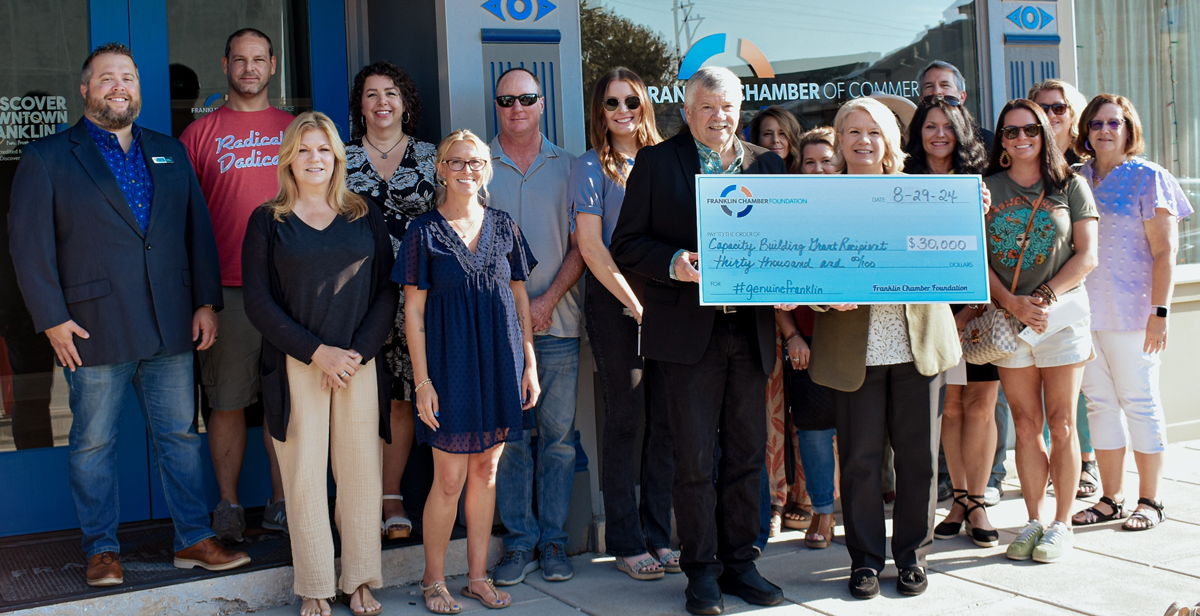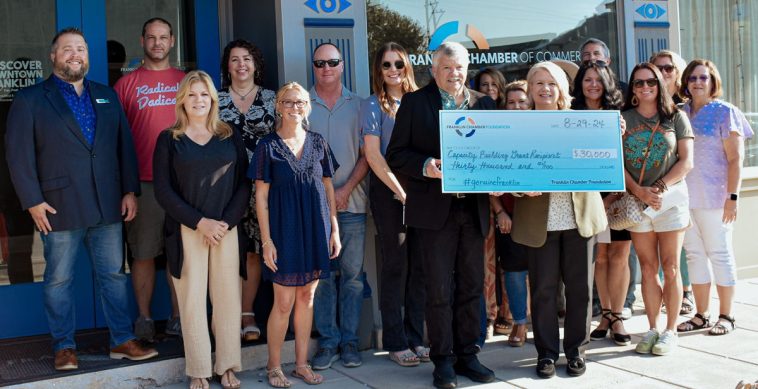
The Hidden Trials of Online Home Improvement Websites: A Closer Look at Digital Security and User Accessibility
In today’s digital world, both homeowners and professionals in the home improvement space need to remain ever-vigilant. While many of us fix leaky faucets or update aging exteriors, there are equally nerve-racking issues lurking online. Recently, a seemingly routine encounter with a website block message—one that mentioned cookie settings and digital security—became a catalyst for a broader discussion. This article explores how such online interruptions not only mirror the challenges we face in our physical homes but also demand our attention when dealing with home services. We take a closer look at the subtle parts, or little details, of online security that affect home improvement websites.
Much like the unexpected gremlins that can emerge during a remodeling project, digital hurdles can pop up without warning. They remind us that protection is key whether we’re fortifying our homes or safeguarding our online presence. In this piece, we dive into the tricky parts of online security, discuss steps for troubleshooting, and draw comparisons between the digital and physical worlds.
Understanding Website Block Messages and Their Relevance to Home Improvement
What Does It Mean to Be Blocked Online?
Imagine you’re ready to explore the latest trends in outdoor yard care or the newest techniques in home renovation. Suddenly, you are met with a message stating, “Please enable cookies. Sorry, you have been blocked.” Much like an unexpected roadblock when trying to expand your living space, this message can be both annoying and nerve-racking.
This digital message is a result of security measures designed to protect websites from online attacks. Just as a homeowner might install a high-security lock to prevent break-ins, websites use systems that trigger when unusual or suspicious activity is detected. In our case, the block message mentioned terms such as “Cloudflare Ray ID” and showed details like your IP address—all intended to help the website owner identify and resolve potential threats.
While these technical alerts are meant to ensure safety, not all users appreciate having to steer through confusing bits of online jargon. This barrier might be viewed as overwhelming by many homeowners who are more at home with a toolbox than with digital diagnostics.
Why Home Improvement Professionals Should Care
The world of home services and remodeling depends heavily on clear communication and accessible resources. When a website that offers insightful advice or valuable services becomes inaccessible, the impact extends beyond mere inconvenience. Here are a few reasons why such digital blocks are relevant:
- User Experience: Just as an inconvenient layout can disrupt a home renovation project, an inaccessible website can deter potential clients and DIY enthusiasts.
- Online Reputation: For companies in the home improvement sector, a professional online presence is as essential as a well-planned interior design. Security blocks can tarnish this image, even if their purpose is well-intentioned.
- Information Access: Homeowners and service providers alike rely on digital resources for maintenance tips, DIY guidance, and security updates. Any disruption in access may slow down critical problem-solving processes.
Thus, understanding the reasons behind these blocks—and how to resolve them—is key. Just as you would inspect every nook and cranny in a home before a major upgrade to catch hidden issues, you need to look into the fine points of online security measures to ensure a smooth experience.
Digital Defenses for Home Services Websites: Essential Tips for Enhancing Web Accessibility
Strengthening Your Online Home Base
In the world of home improvement, the first step in protecting your physical residence is ensuring that all entry points are secure. Similarly, the online realm requires robust defenses to keep intruders at bay while maintaining smooth access for genuine users. Website owners, particularly those offering home services, should consider these super important strategies:
- Cookie Management: Cookies may seem trivial, but they are as essential as a well-fitted door lock. They help personalize user experience and maintain secure sessions.
- Network Monitoring: Just as you would check for leaks or weak foundations in your home, regular monitoring of your website’s activity helps detect and stop malicious attempts early.
- Regular Updates: Home renovations are never a one-time project. Similarly, updating website security protocols frequently is crucial for keeping ahead of new threats.
- User Notifications: Transparent communication with your website visitors is as key as clearly labeling a renovation timeline. Detailed error messages and guidance on troubleshooting can reduce frustration and build trust.
By focusing on these areas, home improvement professionals can create a digital space as secure and inviting as a modern, well-maintained residence.
Implementing Advanced Security Measures
The world of website protection offers numerous opportunities to make your online presence both accessible and safe. Below is an organized table that highlights some high-priority security measures and how they can be compared to home security strategies:
| Online Security Measure | Home Security Analogy | Benefits for Home Improvement Websites |
|---|---|---|
| SSL Encryption | High-quality locks on windows and doors | Data protection and increased trust for visitors |
| Firewall Protection | Security cameras and alarm systems | Prevents unauthorized access and cyber intrusions |
| Regular Software Updates | Constant maintenance of home systems | Fixes vulnerabilities and improves overall functionality |
| Website Monitoring Tools | Regular home inspections | Detects suspicious activities and alerts site administrators |
Implementing these measures ensures that your website remains as reliable as a well-constructed home, where both digital and physical securities receive equal attention.
Troubleshooting Website Security Warnings: What Home Contractors and DIYers Need to Know
Interpreting the Block Message and Its Impact
When faced with a block message stating, “Please enable cookies” or noting a specific policy violation, the average user might feel as if they are dealing with off-putting complications that are just too mysterious to handle. But with a little guidance, these digital alert signals can be understood more clearly.
For example, the message might list out specific details such as an identifying Cloudflare Ray ID or the user’s IP address. These might initially seem like complicated pieces of jargon; however, if you take the time to poke around at what they mean, you’ll find that they are designed to help pinpoint where the problem began.
Much like discovering the source of a leak by checking every pipe, understanding each element of a security alert can reveal if the issue is with your browser settings, your internet connection, or an overzealous security filter. During home improvement projects, unexpected costs and delays can arise from hidden problems. Similarly, unresolved online security issues can delay access to valuable resources and create a cascade of further issues.
Key Steps to Resolve the Issue
Fortunately, just like troubleshooting a broken appliance, resolving website block messages involves a series of practical steps. Here’s a user-friendly checklist that both home service professionals and DIY enthusiasts can follow:
- Verify Cookie Settings: Ensure that your browser is configured to accept cookies. Cookies facilitate user sessions, much like a reliable power supply keeps your home running smoothly.
- Examine the Context: Reflect on what you were doing before the message appeared. Were you submitting a query or searching for specific home improvement tips? Understanding the context can help you figure a path to a solution.
- Reach Out to Support: Contact the website owner with a brief explanation of your actions, similar to calling a contractor when something goes wrong on site. Be sure to include any error codes or identifiers provided by the website.
- Clear Browser Cache: Sometimes, accumulated browsing data can create unexpected conflicts. Clearing the cache can be as refreshing as repainting an old room.
- Check Internet Connection: A weak or unstable internet connection is analogous to a shaky foundation in home maintenance—both need careful attention to ensure overall stability.
Employing this checklist not only helps in getting around digital roadblocks but also reinforces the idea that safety and accessibility are intertwined in both online and physical home improvement contexts.
Learning from the Digital and Physical Worlds: Parallels in Security and Maintenance
How Online Security Mirrors Home Security Systems
At first glance, the concept of a website block may feel remote from everyday home improvement tasks. However, there exists a striking parallel between the security measures implemented online and those taken in our homes. Both realms require that we consider protection, maintenance, and accessibility at every level.
For homeowners, investing in a robust alarm or surveillance system can be as necessary as installing a good website security protocol for online visitors. Both are aimed at proactively managing your environment and mitigating risks before they escalate into larger, more intimidating issues.
By recognizing that the digital space is also a physical space in many respects, home improvement professionals can apply lessons learned from one sphere into the other. The small distinctions—the subtle details—between physical and digital security measures become clearer as we take a closer look at how both contribute to a sense of safety and continuity.
Practical Home Maintenance Lessons from Online Troubles
While a security block may seem all too frustrating when aiming to access essential advice on home remodeling, it can serve as a useful reminder of the need to regularly maintain all aspects of your property—both physical and virtual.
Consider the following aspects as a cross-over checklist between virtual and physical maintenance:
- Regular Inspection: Much like a periodic home inspection prevents hidden problems, routine website audits help identify security vulnerabilities before they escalate.
- Consistent Updates: Remodeling projects thrive on staying current with design trends and structural needs. Websites, too, thrive on updated software and security protocols.
- User Engagement: Just as homeowners benefit from feedback on maintenance projects, website users provide valuable insight. Monitor user comments and error reports as you would contractor feedback on a remodeling project.
- Preventive Measures: Home safety drills and emergency preparedness have their parallels in data backup and cybersecurity practices. Both sets of measures are about mitigation and preparedness.
In essence, the lessons learned from deciphering cryptic digital error messages can help home improvement experts recognize the importance of proactive measures, whether the focus is on a leaky roof or an outdated security certificate on a website.
Managing Your Online Presence: A Guide for Home Improvement Experts
Steps to Bolster Your Website’s Security
For professionals in the home improvement and home services industry, your website is often the first handshake with potential clients. Ensuring that the online environment is welcoming and secure is a must-have, much like ensuring that your front door always opens to a well-lit entryway. Here are some concrete steps you can take:
- Implement Comprehensive Security Protocols: Use firewalls, SSL certificates, and regular security audits to shield your site from malicious attacks. These measures are comparable to installing a state-of-the-art alarm system in your home.
- Simplify Navigation and Access: Regularly test your website’s user interface. If visitors encounter block messages or hit dead ends, it can disrupt their journey much like poorly placed furniture can impede movement inside a home.
- Offer Clear Guidance During Interruptions: In case technical issues arise, provide users with straightforward solutions. This might include a detailed FAQ section on troubleshooting cookie or cache issues. Think of it as having an instruction manual for every appliance in your house.
- Engage with Your Audience: Host interactive sessions or support forums where visitors can report issues. This dialogue not only reinforces trust but also supplies administrators with on-the-ground reports to address technical glitches promptly.
By taking charge of these measures, you make it easier for your audience to find your expertise. Just as a well-kept home invites visitors to explore more, a secure website fosters trust and encourages engagement.
Embracing New Technology While Keeping Security Intact
In our modern era, technology is continually evolving, and so are the methods of protecting it. Home improvement websites are now making use of innovative tools to streamline both performance and security. Some of the emerging technologies include:
- AI-Driven Security Systems: Much like smart home devices that monitor and report unusual activity, AI-based tools can detect and respond to threats in real time.
- Cloud-Based Backups: Just as you might install a backup generator for your home during unforeseen outages, cloud-based data backups provide an extra layer of security against data loss.
- User Behavior Analytics: These tools help site administrators understand user behavior and spot anomalies—similar to how home security systems monitor unusual movement patterns around your property.
While these technological advances are off-putting to some due to their initial complexity, it’s important to remember the benefits. By embracing modern security systems, home improvement experts not only protect their digital assets but also present a professional front, thereby making their websites as inviting as a freshly renovated living room.
Facing the Digital Dilemma: Balancing Security with Usability
Why Too Much Security Can Be Counterproductive
The necessity of robust online security measures is indisputable. However, overloading your website with too many security protocols can lead to a user experience that feels overly complicated or even intimidating. Just as a home with overly complex entrance systems might discourage visitors, a website that triggers frequent block messages or confusing error codes can alienate potential customers.
It’s crucial to find the right balance. Here are some factors to consider when striving for equilibrium:
- User-Friendly Design: Ensure that your security measures do not compromise the site’s usability. A balance between blocking threats and keeping the user journey smooth is delicate but critical.
- Transparent Communication: When users encounter block messages, provide clear, friendly instructions to help them get around the issue. This approach is akin to a homeowner leaving clear directions for guests on how to access secured areas of the house.
- Regular Reviews: Periodically assess your security protocols. Much like a home improvement project that requires periodic reassessment of design and function, your website’s security measures should evolve based on user feedback and emerging threats.
Striking this balance ensures that your digital space remains as efficient and safe as a well-designed home, where visitors feel immediately at ease without compromising on safety.
The Future of Online Home Improvement Platforms
Looking ahead, the digital landscape for home improvement professionals is set to change dramatically. As trends in web design and security evolve, the lessons learned from resolving block messages and accessibility issues will inform the next generation of home services websites.
Key trends to watch include:
- Personalized User Experiences: With deeper integration of user data—always managed with strict privacy controls—websites will be able to deliver advice and content that feels tailor-made, much like custom home design solutions.
- Integrated Security Solutions: Future platforms may blend advanced security with user-friendly interfaces that help visitors troubleshoot issues independently.
- Cross-Platform Connectivity: As homeowners increasingly rely on mobile devices, websites must scale security measures that work seamlessly across all formats, ensuring that whether on a phone or desktop, every visitor is treated as a valued guest.
Ultimately, this evolution will require home improvement professionals to keep pace not only with design trends but also with the subtle details of ongoing digital innovations. Balancing these competing demands is like managing a home renovation: every decision, from structural changes to finishing touches, affects the overall experience.
Bringing It All Together: The Road Ahead for Home Improvement Digital Platforms
Acknowledging the Digital Challenges in a Home Improvement World
The momentary frustration when encountering a block message online is a small part of a much larger conversation. It reminds us that, whether we’re repairing a leaky gutter or fine-tuning our website security settings, both realms are filled with confusing bits and nerve-racking twists and turns. Each hurdle, however off-putting, presents an opportunity for growth and improvement.
The digital age, much like the home services industry, is on a constant path of change. The next time you see a message urging you to enable cookies or observe a warning about unusual activity, consider it a call to take a closer look. Investigate these subtle parts, much like you would inspect a home’s hidden structural elements, and use that knowledge to strengthen your overall approach.
Taking a Closer Look at a Unified Approach
It may seem unusual at first to compare website security to home improvement strategies, yet the similarities are both striking and instructive. The following table summarizes the key components that intertwine both domains:
| Component | Digital Perspective | Home Improvement Analogy |
|---|---|---|
| Security Measures | Firewalls, SSL certificates, AI-driven analytics | Alarm systems, high-quality locks, surveillance cameras |
| User Experience | User interface design, fast load times, minimal error prompts | Open floor plans, clear signage, barrier-free access |
| Maintenance | Regular updates, bug fixes, periodic audits | Roof repairs, plumbing inspections, energy audits |
This unified approach emphasizes that regardless of whether you’re managing a website or a house, safety, clarity, and foresight are essential. The digital barriers we sometimes encounter serve as a reminder to always be prepared, equipped, and proactive—values that are just as critical in the world of home improvement.
Conclusion: Building Secure and Accessible Digital Homes
Stepping Forward with Confidence
The journey through online obstacles—from blocked pages to cookie issues—mirrors the challenges we face in maintaining and renovating our physical spaces. Home improvement specialists and DIY enthusiasts know that every small detail, every hidden complexity, requires attention. Whether dealing with a digital block or a stubborn home repair, both scenarios test our ability to find solutions amid nerve-racking twists and tangled issues.
As we make our way through these challenges, it’s critical to remember that every hurdle is an opportunity. The lessons learned from enabling cookies, troubleshooting security warnings, and simplifying digital interactions may well be the same lessons that help you manage a home renovation project—diligence, persistence, and a focus on balance.
For those who rely heavily on online resources for advice, inspiration, and service connections, maintaining a secure, accessible website is as key as keeping your home in top-notch condition. By recognizing the parallels between physical and digital security, home improvement professionals can embrace a holistic approach that protects both their tangible assets and their digital presence.
Looking Ahead: A Future of Reliable Digital and Physical Spaces
As technology continues to evolve, the experiences that once seemed purely technical—like a simple block message—will increasingly inform our strategies for building resilient digital homes. From enhanced security measures to more intuitive user interfaces, the future is bright for websites in the home improvement space. By staying informed and regularly re-assessing both our online and physical maintenance protocols, we can confidently steer through any challenge that arises.
Let the next time you encounter a small digital hiccup be an inspiration to address the issue, learn from it, and emerge stronger on the other side. Whether you’re updating an old roof or refreshing a website’s security, the goal remains the same: to create spaces—both online and offline—that are secure, user-friendly, and built to last.
In the end, every blocked access message, every cookie prompt, and every update installation is part of the broader narrative of adaptation and growth. Much like renovating a home transforms it into a safer, more inviting space, improving digital security can transform an online presence into a reliable resource for homeowners and professionals alike.
As we continue to invest in both our living environments and our digital platforms, it’s wise to remember that safety and accessibility are not mutually exclusive—they go hand in hand. So, whether you’re stepping into a freshly improved living room or logging into a newly secured website, take pride in knowing you’ve taken the right steps towards building a better, more secure future.
Now is the time to embrace these lessons and apply them to every facet of our lives—from the renovation of our homes to the constant maintenance of our online interactions. Together, let’s build spaces that are welcoming, secure, and ready for the next wave of challenges, no matter how nerve-racking or complex they may initially appear.
Originally Post From https://dailyjournal.net/2025/09/05/franklin-chamber-foundation-awards-six-business-growing-grants/
Read more about this topic at
Access Denied on several sites? : r/techsupport
Access denied to basic websites – Microsoft Q&A


